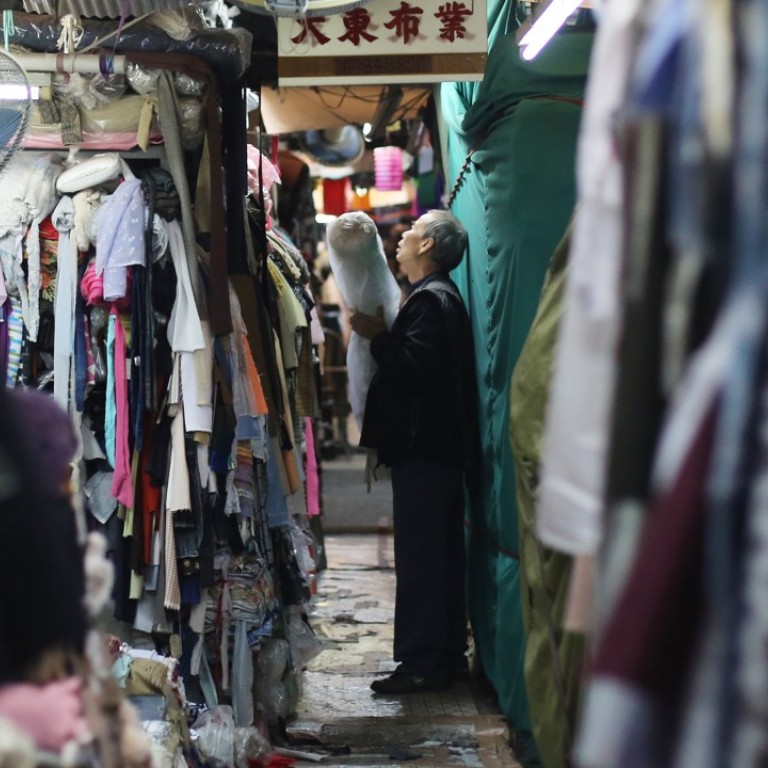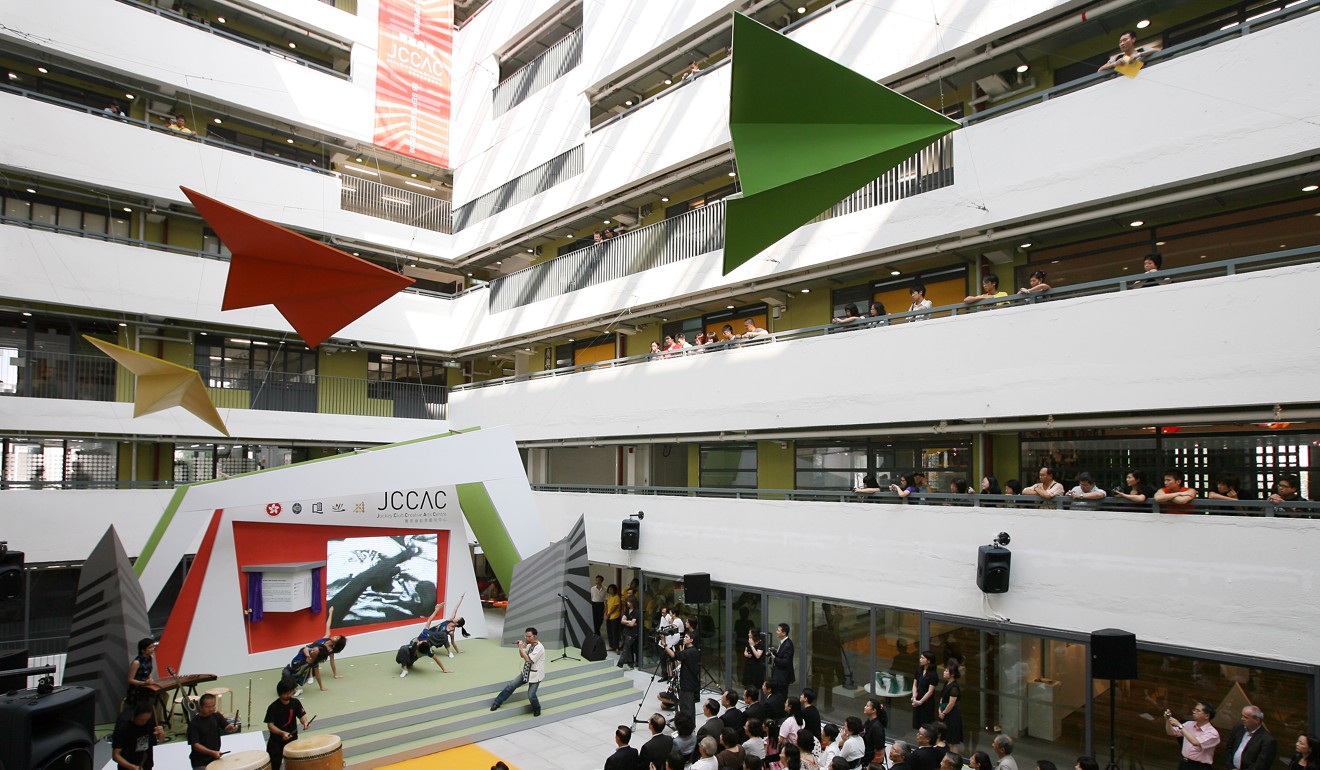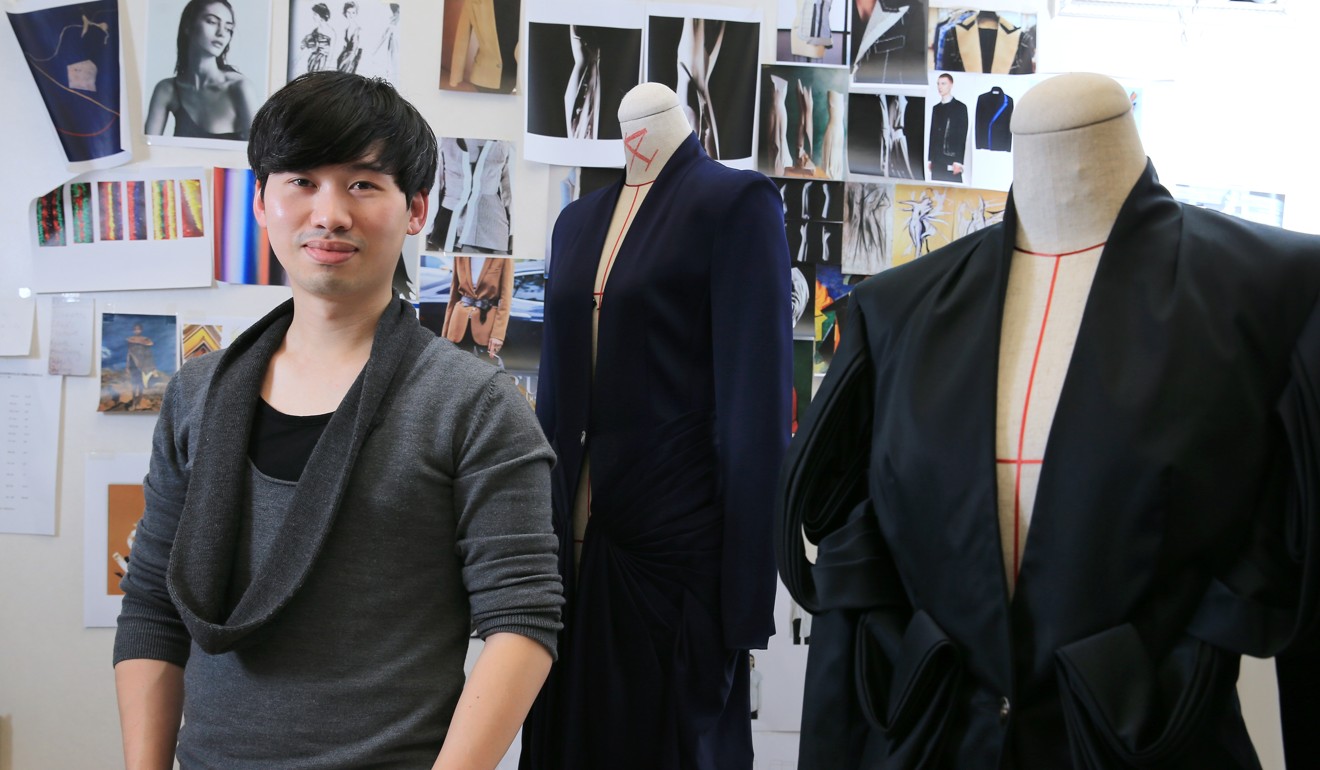
Can Sham Shui Po, one of Hong Kong’s oldest and poorest neighbourhoods, take off as the next fashion and design hub?
Sham Shui Po is a densely-packed maze of cramped flats and cheap, colourful wares for sale. But with its rich cultural heritage, plans are afoot to make it a magnet for designers and tourists alike
A white historic building surrounded by the glitzy skyscrapers of Central and the hipster shops of Soho has been the site of hundreds of thousands of Instagram photos and is described as a must-visit destination on tourist and design guides.
It once housed the city’s men in blue, but since 2014, the Police Married Quarters or PMQ, has been a trendy melting pot of local fashion, design, art and lifestyle offerings.
Now, the government wants to replicate its success and build a similar design and fashion hub – this time in the predominantly working-class area of Sham Shui Po.


She said her administration would “actively look into ways for young designers to make full use of the traditional base for apparel and fabrics in Sham Shui Po District to create new synergy”.
The plan is part of a grander vision to boost the creative industries and make them a new driver of economic growth for Hong Kong, which has traditionally relied on sectors such as real estate and finance.
The growth of the design industry – which spans interior and furniture design, multimedia, visual and graphic design, fashion and accessories design and industrial design – shows there is potential for it to shine further. Between 2005 and 2015, it expanded at an annual rate of 15.3 per cent, and was worth HK$4.1 billion (US$524 million) in 2015, up from HK$1 billion a decade earlier.
It is now the fourth-biggest in the manufacturing sector, with 490 organisations employing 1,000 people last year.
So what value can the Sham Shui Po hub bring to designers? And will there be a cost to the community?
Harking back to history
During Hong Kong’s industrial heyday in the 1970s, Sham Shui Po was the centre of the garment and cottage industries, with thousands of wholesalers, processing factories and retail shops forming a complete production chain.
While most of the factories have since relocated across the border on the mainland to benefit from cheaper rent and labour, hundreds of wholesalers remain in business today, mostly on Ki Lung Street and Yu Chau Street.
In recent years, a number of institutes specialising in art and design have emerged, notably the Savannah College of Art and Design (SCAD) and the Jockey Club Creative Arts Centre (JCCAC).
In January, Secretary for Commerce and Economic Development Edward Yau Tang-wah, when briefing district councillors, said the government would take about five years to convert a block of run-down buildings – at the junction of Tung Chau and Kweilin streets – into a 3,600-square metre complex with five storeys of fashion studios, production workshops, co-working and seminar spaces, an incubation centre, and a library for reference materials and periodicals.

He explained that the idea was to bring designers under one roof to exchange ideas and spark creativity, and provide them with shared equipment to make production more efficient. To draw them to the site, the government will offer subsidised studio rental fees.
Vendors from the cramped Yen Chow Street Hawker Bazaar would be moved to the Tung Chau Street Temporary Market, next to the complex, Yau added, placating the two dozen or so fabric vendors who had turned up at the briefing to demand better relocation terms.
Signalling the importance the government placed on the project, Yau was joined by Tourism Board executive director Anthony Lau Chun-hon, Hong Kong Design Centre chairman Eric Yim Chi-ming and Urban Renewal Authority executive director Michael Ma Chiu-tsee at the meeting.
District councillor Vincent Cheng Wing-shun, said their attendance reminded him of a meeting eight or nine years ago when three heritage sites in the area were earmarked for revitalisation.
How a group in Sham Shui Po is helping poor Hong Kong stall owners make ends meet
Two of them were SCAD – redeveloped from the former North Kowloon Magistracy – and the JCCAC, which inherited a defunct factory block. The third site, Mei Ho House, is now a youth hostel and museum.
But Cheng said the revitalisation projects had been a disappointment.
“Operators of those three venues had promised us a lot of things, such as better community collaboration and the promotion of culture and arts,” he said.
“But take the JCCAC for example. Local groups are almost barred from the venue,” he continued, referring to the stringent criteria that artists and arts groups had to meet to occupy studio spaces.
“It was as if they were looking down on us. This makes me worried how the future design and fashion hub can engage and blend in with the community.”

Sceptics and supporters
Cheng was not alone in expressing his reservations about the project. Another district councillor, Yeung Yuk, said he was worried it would unleash a wave of gentrification.
“Grass-roots residents are a large part of the Sham Shui Po community. I fear the project will push up prices in the neighbourhood, and worse still, become a mismatch with the bazaars and street stalls nearby,” Yeung noted.
Does the project include clearing out these areas that authorities think are too dirty for tourists to see?
“Does the project include clearing out these areas that authorities think are too dirty for tourists to see?”
The councillors at the meeting also voiced concerns about rents going up, pushing out the small fabric, tailoring and clothing shops that gave the area its character.
“Sham Shui Po has always been an area with a humble background. You can get a jacket or a top for as cheap as HK$50. I’m not sure whether locals would consider my products,” he said.
Ho, who specialises in womenswear, said a typical jacket from his brand went for HK$6,000, while tops cost HK$3,000.
“All of my clothes are tailor-made from quality materials and require a lot of craftsmanship, so it would be impossible to push prices any lower.”
While the convenience of being close to a wide range of fabric shops was advantageous, designer Shirley Wong said the location of the new hub was not desirable because it was not a known destination for fashion enthusiasts and tourists.

“I don’t think shops would do well there, but having a subsidised studio or workshop space would help,” Wong said.
But fellow designer Yeung Chin was more optimistic. He said the hub was likely to serve more tourists and fashion-conscious locals, and they were willing to pay higher prices.
“There must be space for us to sell our products. What’s the good in having a studio for us to work in, a venue to hold fashion shows but nowhere for customers to go to and bring home a few pieces of clothing in the end?” he asked.
Yeung said that what designers wanted most was a communal workshop with a complete arsenal of machines and equipment to test out different garment treatment techniques.
“Polytechnic University is equipped with machines that will drastically cut our production time and costs, but they are only accessible if you study there. We have always dreamt of using the equipment, but it is unlikely to happen,” he said.

Yeung now runs a boutique at PMQ which doubles as his workshop, and said the most significant difficulties local designers faced were a lack of financial and business resources. He hoped the future hub could provide more of such support.
He noted, for example, how designers had to source fabric and raw materials by visiting wholesalers one by one.
“Is it possible that the hub could create a central database so we could put through orders in one terminal?” Yeung asked.
Preparing the ground
Yau addressed these concerns to some extent when he spoke of the groundwork that had to be laid now to ensure the design hub takes off when it is launched, likely in 2023.

The campaign would be modelled after the Old Town Central campaign, a self-guided excursion for tourists through the hilly roads of Sheung Wan on Hong Kong Island featuring maps and audiobooks highlighting notable heritage landmarks.
Earlier this week, the board confirmed it would begin marketing Sham Shui Po in the second quarter of this year, and planned to do the same for five other districts, including Wan Chai.

Melbourne-based designer Sam Giles, who was previously based in Hong Kong for eight years, suggested that the fashion and design hub cater to broad tastes rather than target an exclusive group of visitors. He hoped it would be a showcase of the new and old.
“I have met a lot of old ladies in the area who offer alteration services. Is there a way the hub can bring in such old-school talent and let the young ones learn from them, in a commercialisation of the trade?” he asked
But for at least one fabric vendor with 30 years in the business, entrusting a new generation of Hongkongers to lead the district’s revitalisation would not be such a bad idea.
Chen Hsing-chu, owner of Yick Fung Piece Goods, acknowledged that time was ticking for veteran entrepreneurs. “Shops like ours are closing down one after another,” he said. “By the time the hub is ready, I will probably have retired. I don’t know how many of us would survive until then.”



